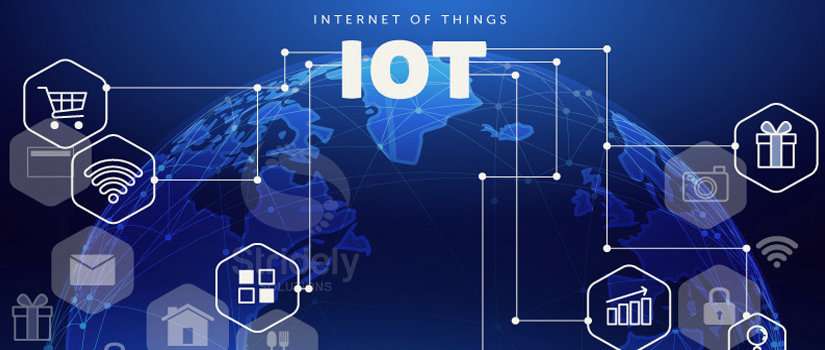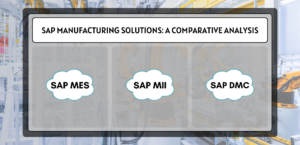IoT – Internet of Things, is currently disrupting every sector. If we talk about the market size, IoT is expected to grow at a rate of 25.4% in the next 7 years (2021-2028). Yup, this is massive!
In 2022, you may expect the technology to drive significant revolutionary changes in how we do things and how we perform business operations. Industries, from Oil & Gas to metallurgy, all challenging sectors are benefitting from the improvement in related technological implementations, caused by IoT.
Business Solution: Unified IoT Platform
Growth of IoT: Major Areas of Disruption
IoT is evolving very rapidly. To under its current usage scope, we can begin our discussion by pondering over the areas that are fully transformed since IoT’s arrival. Here is our list:
- Sensing (or Sensors)
IoT sensors can replace humans in the field, facing harsh conditions, just to get a few readings. Besides taking the reading, the delivery of captured data need not be noted down manually in computer systems today.
Be the humidity, temperature, pressure, velocity, proximity, acceleration, deviations, or fluid levels, IoT sensing endpoints can capture all details and send the data to monitoring systems in real-time. Not just that, these sensors can also figure out the composition of components in various mixtures. So, the healthcare, chemical, mechanical and other industries can also utilize sensors to operate more efficiently.
Major Highlight about IoT Sensor Technology Disruption
IoT laid the foundation of the Industry 4.0 revolution and smart (fully-automated) companies. When combined with smartphones, wearables, artificial intelligence, and machine learning, sensors can serve a huge number of purposes. The best part is, IoT sensors are pocket-friendly and can reduce the total cost of ownership for ventures.
Success Case: IoT Framework For Retail Industries: Entering Into The World Of Connectivity
We can expect that next-gen sensors will be more precise, fast, and varied.
- Device Communication
IoT network comprises ‘Things’. These things are interconnected and perform various actions through communication via the internet. IoT communication-enabler components form the core of IoT infrastructure, connecting devices, clouds, sensors, and people using gateways, routers, and related platforms.
As per Gartner, the market of enterprise IoT connections and automation due to these connections – alone – is expected to grow by 20%. The reasons behind this trend are speed, experience, and utility of wireless interconnection between IoT components alongside the benefits these aspects, all combined, result in.
Major Highlight about IoT Communication Disruption
Considering this demand chart, innovations related to IoT communication are also on the rise. WiFi 6.0, Bluetooth 5.2, and other communication protocols are being updated to match the needs of IIoT (Industrial IoT sector).
Success Case: Asset Monitoring Web Portal With Azure And IoT
- Security
The use of personal and professional devices and various other lockdown challenges surround us every day. There is a huge surge in the number of cyberattacks, threats, and compromises this year. The 2 reasons why conventional security-related technological solutions do not fit their current deployment scenario anymore are:
- Implementation of IoT
- Remote working culture that COVID (almost) forced upon us
Major Highlight about IoT Security Disruption
IoT promotes hyperconnectivity for users. With the always-connected approach and the variety of devices come cybersecurity challenges that are essential to be addressed. This fact has made enterprises upgrade their security strategies.
Also Read: Enable your Legacy device to Modern IoT Cloud through TCP Connection
Security automation, changes in security standards, AI-based security implementation, threat intelligence, and ML-enabled (machine learning) security tools are the trends that IoT’s industrial adoption has initiated.
- Data-sharing and Analytics
IoT sensors and other devices can communicate in real-time and deliver data at a very fast pace. The amount of this data is too huge to be processed manually.
Also, as the data is arriving in real-time and is available for immediate decision-making, businesses look forward to automating the analysis process. This practice enables them to curate Big Data faster and gather insights that are trustable.
Major Highlight about IoT Analysis and searching Disruption
IoT sensors and communication mechanisms suit the best for training the AI models. Predictive analytics and analytics of live streams are the two disruptive trends based on this IoT function.
As the driving force of business intelligence, IoT is (indirectly) also capable of luring enterprises and other businesses to shift to the cloud and perform necessary analytics in real-time.
To ensure security in such a fast-paced environment, blockchain can ensure secure and encrypted communication. So, IoT is also promoting the use of blockchain technology to some extent.
Internet of Things + Artificial Intelligence
IoT provides reliable means for gathering the data and transmitting it faster. It connects networks in a truly hyperconnected manner. The technology can keep generating a huge heap of data with or without human interaction.
Download Guide: AI Builder
On the contrary, Artificial Intelligence requires a huge amount of data for model training and precise operations. This dataset can help the technology take better, and more human-like, decisions while improving the actions it triggers.
This makes IoT and AI a perfect match. The duo can change the facet of various industries and can transform the way of doing industrial operations.
A Few Transformations Driven by IoT
- Healthcare equipment like health monitoring systems and wearable devices utilize IoT.
- Weather monitoring systems and crop health monitoring sensors help the agriculture sector in boosting productivity and preventing/reducing losses.
- GPS, fleet monitoring systems, and traffic monitoring sensors have transformed the way we travel or transit goods.
- Sensor-enabled doors, lifts, train/bus gates, and escalators have made it simpler for us to navigate through places and within our homes/offices.
- Heavy Field jobs, like finding oil reservoirs by digging, are transformed. Now, various sensors are used to confirm the presence of reserves in an area. With this, multiple laborious tasks are removed from the process.
- IoT forms the fundamental component of smart cities, smart factories, smart homes, self-driven cars, and other intelligent solutions.
The Final Word
The Internet of Things is an important technology. It has changed the common method of performing various operations. The hyperconnected mechanism of IoT ensures real-time operations, faster processing, higher productivity, less human involvement in the process, and cost-effectiveness. However, it might demand more security and storage space alongside the migration of your business to the Cloud, to begin with.
Hire Stridely professionals for IoT solution development or digital transformation through migration to the Cloud. It will transform your ROI (Return on Investment) and TCO (total cost of ownership) statistics in a positive manner. We also have BI experts to help you out with full enterprise business process transformation






